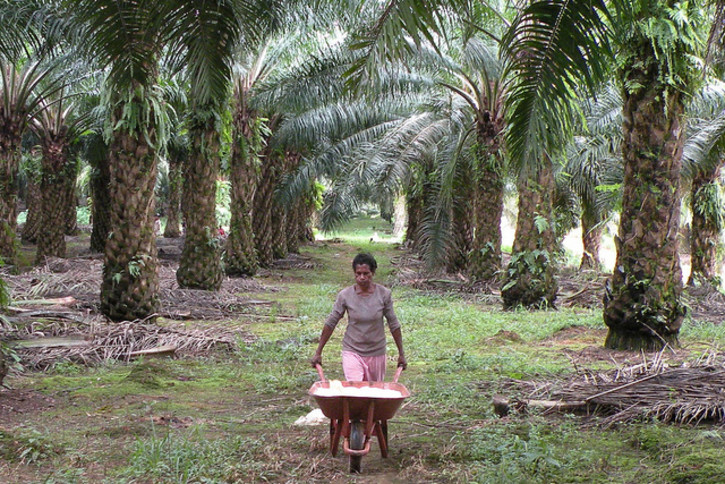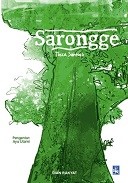Written by TOSCA SANTOSO

(Agus Andrianto for CIFOR, via Flickr)
Karen researched the many investors who were competing for land in Papua. Mostly agribusiness and mining. Two types of enterprise that generally conflicted with the Rainbow Warriors’ mission. Karen knew the businesses’ thugs and spies already had their black tentacles in Papua. She felt the Rainbow Warriors were in a race and their opponent was driving a much faster car.
From her reading, she saw that, for investors, Papua is a land of new prospects. The jungles of Java were destroyed during the Dutch colonial era, and in Soekarno’s time. And the forests of Sumatera and Kalimantan fell to the greed of the Soeharto period. Only Papua remained. “It’s time to go east,” said a conglomerate’s spokesperson to a business magazine.
Lontar Modern Indonesia: ‘But that is, after all, the relationship between land and power... Whoever holds power will impose their view.’
Translated by Tessa Piper
read in original Indonesian here
-
Sarongge is a love story set against a backdrop of meticulously researched true events in Indonesia’s recent environmental history. Each chapter in the novel begins with a detailed description of an endemic flora and the whole book is infused with the author’s passion for his country’s environmental wealth and the vital importance of its preservation. Through the activism of its female protagonist, Karen, readers traverse the country and gain insights into the devastating results of deforestation on some of the world’s last remaining rainforests, as well as the frequently negative impact of development on natural resources and the rights of indigenous peoples. The struggles of life in the rural hamlet of Sarongge, the setting for much of the story, is told through the eyes of Husin, Karen’s lover and is loosely based on the author’s own work with the local farming community there. Both fighting in their different ways to preserve nature, the two lovers offer role models for those seeking to make a difference despite sometimes seemingly insuperable odds.
An extract from Chapter 13, ‘Hipere’
The Rainbow Warrior maneuvered slowly. Leaving Yamdena behind, its compass set to the Timor Sea. The sky was clear and cloudless. The journey would be fairly long. From Yamdena, they would stop off briefly for drinking water on Dobo Island. Before ending the first part of the sail in Timika Harbor.
Karen planned to use the sailing time to learn more about Papua, its people, and the last untouched tropical rainforest. The Rainbow Warrior was equipped with a satellite connection for continuous Internet access. Even in the middle of the ocean. She downloaded journals, reports, and the latest news about Papua.
Karen researched the many investors who were competing for land in Papua. Mostly agribusiness and mining. Two types of enterprise that generally conflicted with the Rainbow Warriors’ mission. Karen knew the businesses’ thugs and spies already had their black tentacles in Papua. She felt the Rainbow Warriors were in a race and their opponent was driving a much faster car.
From her reading, she saw that, for investors, Papua is a land of new prospects. The jungles of Java were destroyed during the Dutch colonial era, and in Soekarno’s time. And the forests of Sumatera and Kalimantan fell to the greed of the Soeharto period. Only Papua remained. “It’s time to go east,” said a conglomerate’s spokesperson to a business magazine.
Other articles showed that millions of hectares of Papuan land had been divided up for the investors. As if no one owned the land. As if the land had no inhabitants. “It’s a shame, isn’t it, if abandoned land is not put to use. It’s a waste, to squander a gift from God,” said a government minister commenting on a protest about the establishment of palm oil, sugar cane, and maize plantations in South Papua.
Karen read this with a deep sense of concern, as well as anger. Stories from local Papuan sources showed that the “abandoned land” that the minister spoke about is, for Papuans, a place full of life. Full of meaning. Not only a place where they seek food, but also a place that links their life with their ancestors and the afterlife. The land is the place where they find their identity. Without land, it is as if Papuans are ripped from their roots. And that is worse than being dead.
But that is, after all, the relationship between land and power, Karen reflected. Whoever holds power will impose their view. The history of place names provides evidence of never-ending contests for power. For centuries, the Amungme people have called the peak of the snowy mountain to the north of where they live Nemangkawi Ningok (White Arrowed Peak). When the explorer Jan Carstenszoon saw the peak in 1623, he could not believe there was snow so close to the equator. Thus the 4,884 meter snow-covered mountain became Carstensz. World maps still use that name. And, when Indonesia arrived, it gave that same mountain a new name: Puncak Jaya. The politics of naming rights. Like dogs urinating in places they pass to mark their territory.
“This land isn’t owned by the governor or the regent. But by the community. Whoever wants to use the land should ask the community’s permission,” said a Papuan customary elder. This viewpoint ran consistently through local publications.
Karen found many stories about the Amungme, a tribe whose existence was threatened because their ancestral land was now consumed by a copper mine. “Amung” means primary. “Me” means person. Amungme means “the primary people”. The first people who left the mountain cave, the original Papuans. The Amungme people live in the South Central Highlands, at heights between one and three thousand meters above sea level. Further to the south, in a lower lying area, the Amungme are neighbors with the Kamoro tribe. Amungme have strong beliefs about the land. Duku-duku is a term for sacred mountains. The place from which they came. Also the place to which their spirits will return after death. Those sacred mountains—including Grasberg and Erstberg—have since been excavated by a mining company. Those sacred mountains have disappeared from the world and disoriented the Amungme people. The dismantling of those mountains was, for the Amungme, as if heaven itself had been forcibly evicted. When dead, Amungme people want to be buried in the mountains. Because the mountains are the head, where it is easier for the spirits to find happiness. But, with the mountain no more, where will their spirits go?
The Amungme people’s beliefs were dismissed. The Amungme, who number only tens of thousands and who lack any political or economic patrons, were, of course, easy to strike down. Their voices were swallowed by greed. Karen wondered: what if that copper deposit had been found under the Wailing Wall in Jerusalem, would the Jews have allowed their sacred site to be demolished by mining bulldozers? If there was a gold seam under the Kaaba in Mecca, would anyone be bold enough to mine there? Or if a uranium source were under the Church of the Nativity in Bethlehem? Major religions have defenders. Not so for the Amungme.
-
 Sarongge was first published by Dian Rakyat in 2012. The second edition is due to be published in 2017 by Indie Book Corner. The English translation will be published in the Lontar Modern Indonesian Fiction Series in 2017.
Sarongge was first published by Dian Rakyat in 2012. The second edition is due to be published in 2017 by Indie Book Corner. The English translation will be published in the Lontar Modern Indonesian Fiction Series in 2017.
-
Tosca Santoso is an Indonesian journalist who founded the country’s first national independent radio news agency, KBR, and has received numerous awards for his commitment to journalism and social change. Sarongge is his first work of fiction.
Tessa Piper is a British national who has lived and worked in Indonesia for the past two decades. Juliana Wilson edited the English edition of Sarongge.
